At the end of 2005, during my journey for Italy, I met Clara who was beginning her specialization course in archaeology. Then only some weeks were enough to fall in love each other, for it as who looks for putting adrenaline to the years, without thinking a lot we decided to venture and to leave together by bicycle. During 2006 and 2007 we cycled through Turkey, Syria, Lebanon, Jordan, Egypt, Israel, Cyprus and Greece and then we returned to Italy. We went in amazing places although for moments the experience was as strong as stressful, maybe because the culture of these places is not the best place in the world to cycle with a too pretty girl and with pretty figure. But it was worthwhile. Then I kept cycling through the Balkans, Turkey, Iran, the Persian Gulf and Pakistan, although we promised each other to cycle together again.
This time, we combined to meet each other in India and although I knew that this country neither was the best place to cycle with her, I didn’t doubt it; because I understood that to cross India together would be also unforgettable. But I also believed that if I didn’t wish that Clara gives up during the first week of the journey we could not leave Delhi by bicycle and neither to cycle the whole country like we made in Middle East. For it we planned to travel in different ways, cycling for the calmest areas and secondary and interesting roads to discover; or by train or by bus between the big cities, sometimes carrying our bicycles or even without them. And it was a good idea.
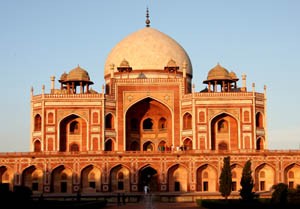
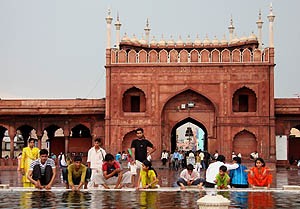
To her arrival we went to Majnu ka Tilla area, a Tibetan colony outside the city where we stayed one week. Then we visited the Red Fort, the Humayun Tomb and the Jama Masjid Mosque which date from the Mongolian time between the XVI and XVII century. We also went to the Connaught Place and the Chandni Chowk markets and to the Main Bazaar, where we have stopped each 10 m to look at all type of feminine clothes; and lastly we visited the Akshardham Temple which according to people has 20.000 statues of divinities, the ISKCON Temple of the Hare Krishna Movement and the Lotus Temple which has won numerous prizes in architecture and distinguished so many times in international magazines and newspapers.
Discovering the Ladakh
Due to the heat of Delhi and to the Monsoon which had already begun in the north of the country we decided to travel to one of the most isolated areas in India, the Jammu and Kashmir province, which limits with Pakistan, China and the region of Tibet. Although this area is the centre of a fifty year-old dispute between India and Pakistan which has already provoked two wars and almost a nuclear confrontation in 1998, at the present time it is much calmer, for what the tourism slowly begins to make return to this legendary destination.
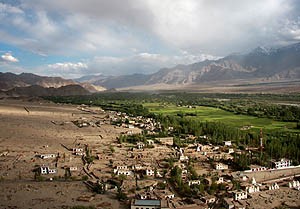
On the east of the Jammu and Kashmir province is the Ladakh region which is a great plateau over 3000 m. It is located on the western slope of the Himalayas, where the valley of the Indo River crosses, and desert areas and picks 6000 m high also exist. This region puts up one of the last communities of the Tibetan Buddhism that subsisted to the different colonies, to the violence of the Mongolians and to the cultural revolutions thanks to its strategic geographical position. Between November and May the Ladakh is almost totally isolated, since to arrive by land means to cross the highest mountainous pass in the world, for what its isolation has preserved a medieval lifestyle transforming it in one of the most impressive areas in East.
Our first destination was Leh, capital of Ladakh, which according to people it is as if it was a small Tibet, since from the moment that China occupied it, many Tibetan took refuge in this area.
Located to 3.500 m of altitude Leh is a tourist city with numerous travel agencies and shops of all type, even pizzerias and Italian restaurants. The symbol of the city is the impressive Leh Palace built at the beginning of the XVII century by the Real family of Ladakh, in the same style of the Potala Palace in Tibet.
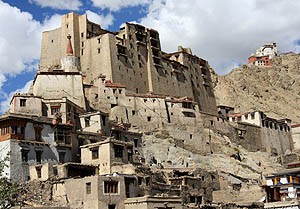
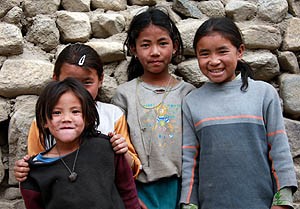
During our stay we walked several times through the narrow streets of the city which hide the oldest houses built with wooden and bricks of mud transporting us to another era, we also visited several gompas and stupas which enjoy of fabulous views due to be almost always located in the highest places. According people explained to us a gompa is a monastery where monks and novices live to learn and to be formed in the spiritual practice, through the observation, reflection and action by means of the study and investigation. At the interior of the Sankar Gompa exists old paintings and a statue of Avalokiteswara, the Buddhist Divinity of Compassion which according to the Tibetans was personified in the Dalai Lama.
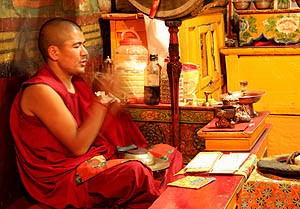
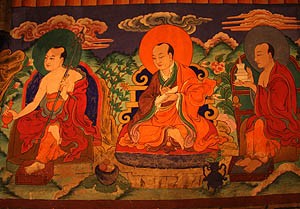
The stupas are funeral monuments of pilgrimage which point out the place where a Buddhist relic has been buried. They can sometimes be the ashes of some saint, to contain cult images, objects that belonged to Buddha or simply to expose the Buddhist doctrine. Some stupas have the sanctuary function. And in Ladakh, there are them in everywhere.
Cycling through the Indo Valley
Through the border of India and Pakistan the valley of the Indo River exists. It is considered the cradle of the civilization of the Indian subcontinent which originally was populated by some nomadic tribes who have lived cultivating the land and raising animals. And although it has already passed more than 5000 years of those first establishments, during our cycling through the valley we felt that the things have changed very little since that time.
There, we were interested to know more gompas, so we went to Shey, the town located at the southeast of Leh. It was the residence of the Real family of Ladakh in the past and today its palace is still a cult place. There is an old fort too and a small gompa which is the residence of the local Lama. Not so far from there the Thiksey gompa exist, it dates from the XV century where a lot of monks live and where there is a statue of Maitreya (the Buddha of the future) of 14 m of high. According they explained to us, Buddha (Siddhartha Gautama) announced to Maitreya like the name of the next Buddha, his successor; who will be born in the earth to achieve the complete illumination and to teach the natural dharma (righteous duty), although according to the Buddhism it would happen in a long time.
Then our trip carried us to northwest, down river, although cycling up and down hill everyday, most of the time through an arid and isoleted area. There were some moments that we cycled up for more than 20 km and I was surprised because very often Clara cycled faster than me. So we cycled during several days and we visited small towns like Nimmu, Basgo, Alchi, Khalsi and Lamayuru. At night we slept in our tent among majestic mountains or in small hotels to take a shower and to avoid the cold weather. Definitely this part of the journey was the most impressive of the whole trip through India.
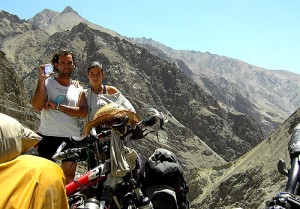
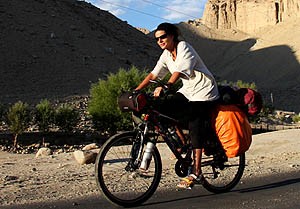
When we arrived to Lamayuru we stayed in a small pension of a local family, who have very peculiar features, unmistakable, Tibetan style. There, we rested and savoured Tibetan dishes which are so different to the spicy Indian food, the plate that I loved was a kind of gnocchi kneaded by the owner of the house, I still remember it, I ate 3 giant plates, but we also ate momos, thukpa and chowmein. Everything was a delight.
During our stay, we visited the Lamayuru gompa, located in the summit of a rocky mountain. It is the oldest in Ladakh which dates from the century X and where local people use to go with their manikor. The manikor is a small revolving cylinder or wheel of prayers which is used traditionally by the Buddhists for the prayer. It is believed that each rotation is equal to an expression of the mantra OM MANI PADME HUM, the mantra of the compassion which is inscribed inside and outside of the manikor. According people explained us the mantra helps to achieve the perfection in the practice of the generosity, of the pure ethic, of the tolerance, of the perseverance, of the concentration and of the wisdom.
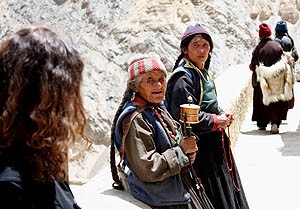
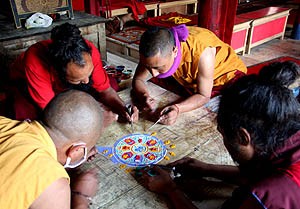
Once inside the gompa we witnessed the creation of a mandala that according to Tenzin, a Tibetan monk, is a millennial art that allows by means of a graphic representation to reach the meditation and concentration to be re-established in the unit of absolute conscience. As therapeutic virtues it allows to recover the equilibrium, the knowledge of oneself and the internal calm, necessary to live in harmony. According to Tenzin, its practice consists on choosing one mandala and simply to colour it.
We stayed in Jammu and Kashmir province during almost one month, where we also visited Kargil, the oriental place which points the limit of the Muslim presence in Ladakh, but we didn’t like it, because its people are hostile, maybe because in 1999 the place was the scenario of a significant battle during the war Indo-Pakistan for which the city still remains strongly occupied by the Indian army.
But Srinagar was totally different, in spite of being invaded by military forces in a shameful way; (a soldier each 20m in the city, and several of them each 150m in the route), we found their people one of the warmest and friendliest than we have met in India. Srinagar was one of the cities more affected due to the Kashmir conflict, since its population depends highly on the tourism. A real shame, because it is one of the most original place that I have visited in my whole trip. The Dal Lake is the jewel of the place which has more than 300 square km of calm water and a lot of life, like its floating hotels, its boat-salespersons and its great market.
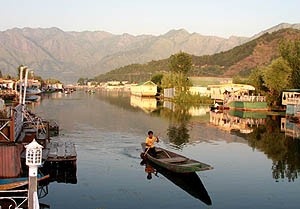
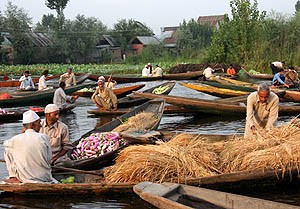
Hopefully Srinagar is invaded again but by tourists as 20 years ago, because the place and its people really deserve it.


